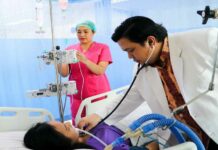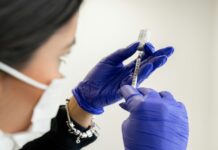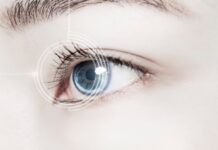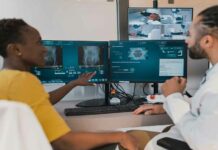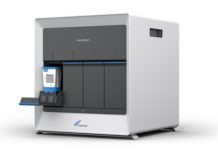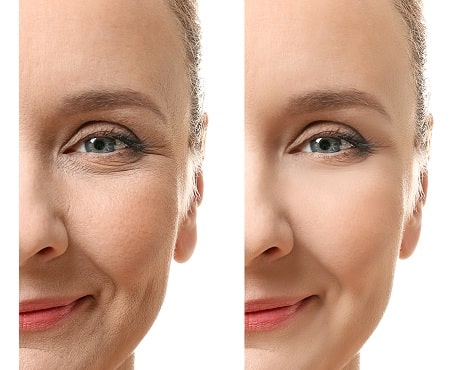Facial plastic surgery is a practice that dates back more than 100 years. It can either be reconstructive or cosmetic. Its objective initially was to reconstruct or restore patients’ facial parts (neck upwards) affected by defects, disease, or injury. Later, it became more popular, especially amongst the rich and celebrities who wanted to enhance their facial appearance aesthetically.
Cosmetic facial surgery is now being embraced by more and more people, both young and old. And people who seek to change facial appearance or reverse and improve changes brought about by aging on the face like double chin, loose skin, and fine lines now embrace cosmetic facial surgery.
The possibilities offered by cosmetic facial surgery are vast, and the field is still evolving. Below are some of the most popular and sought after cosmetic facial procedures:
-
Rhinoplasty
Also widely referred to as the ‘nose job’ is one of the most popular cosmetic facial surgeries. It’s also regarded as one of the most difficult procedures in facial plastic surgery. It aims to modify the appearance of a patient’s nose either in size, shape, or proportions. During this procedure, the skin on the nose, bone framework, and mucous membrane are manipulated and reshaped to produce the desired nasal contours. In the past, because of the challenges in the procedure and complications that may arise, most patients had to undergo secondary surgery. But there’ve been advancements in the medical field that enable precision in surgery, and thus only one session now gets the job done.
-
Facelift
A facelift is a surgical procedure intended to improve your skin’s appearance brought about by aging. This procedure involves repositioning and/or removing skin, muscle, or fat. It can improve sagging skin, folds, and creases around the mouth and nose; and also repair facial fat, drooping skin, and loose skin. Facelifts are intended to tighten the sagging skin on the face, chin, and neck. The advancements of this procedure have been catalyzed because of the patients’ demand to the extent that the facelifts are now done quickly and require very minimal invasion.
There are different types of facelifts that are meant to deal with different areas of the face that need improvement:
- Traditional facelift: In this procedure, several incisions are made on the front of the ear, up to the hairline, extending to the chin. The skin is separated from the deeper tissues, excess fat is removed, muscles and skin are tightened, and the skin is re-draped. This procedure is recommended for people who want an overall improvement of their facial skin and appearance.
- SMAS facelift: Superficial Musculoaponeurotic System (SMAS) facelift deals with the muscular layer of your face. Here, the muscles on your face are tightened, and excess fat from your cheeks and lower face is removed.
- Deep plane facelift: It is an advanced technique where the muscular layer under the skin is released and repositioned. The result is a more natural and relaxed look compared to other procedures, where the skin is pulled to give it a tight look. This procedure addresses issues in the whole face.
- Mid-facelift: Also called a cheek lift, is recommended for people with sagging skin on cheeks and the surrounding area. Here, the fat in your cheeks is repositioned, and the skin is tightened. The effect is tight skin on the upper mouth and the eye area.
- Mini-facelift: Mini-facelifts lift sagging skin on your lower face and neck area. The procedure is popular among younger people experiencing early signs of aging. It’s a quick process and less invasive.
- Cutaneous (skin) facelift: This technique is used by people who only need excess facial skin removed to pave way for smoother and tighter skin. In this procedure, the muscles and fat are not involved, it’s only the skin that is affected. It tightens the neck and lower face skin.
-
Blepharoplasty
Blepharoplasty or eyelid surgery is a cosmetic surgery that is done to improve facial appearance by modifying the eye region. As we age, muscles weaken, and eyelid skin stretches, making us look old. This surgery rejuvenates and improves tired eyes, droopy eyelids, or bags under the eyes.
There’re different types of cosmetic eyelid surgery:
- Upper blepharoplasty: This procedure removes excess fat, muscle, and skin responsible for droopy, hooded, or heavy eyes. The same is removed through an incision made in the upper eyelid crease. Patients may look younger and rested after undergoing an upper blepharoplasty.
- Lower blepharoplasty: It is also known as lower eyelid surgery, where the extra fat deposits, muscle, and skin which cause crow’s feet, dark circles, and puffiness under the eyes are removed through an incision along the lower eyelids. The incisions are made either below the lash line or inside the lid. And it might result in a refreshed eye appearance.
- Double blepharoplasty: This is a combination of lower and upper eyelid surgery performed at the same time.
-
Forehead Lifts
It’s also known as brow lifts procedures that are meant to improve the appearance of the forehead, eyebrows, and eyes. Contrary to misconceptions, both men and women can have brow lifts done. They can be performed in various ways:
- Lateral Brow Lift: This is a less invasive procedure where a small incision is made in the hairline laterally above the brow. A row of stitches is then passed from the lateral brow to the scalp to pull up the brow. Scarring is minimal and is well-hidden by the hairs of the brow. This procedure reduces eyelid heaviness and takes only about 90 minutes to perform. It takes approximately one week to heal.
- Endoscopic forehead lift: Here, a thin tube with a camera at the end together with special instruments are placed through incisions made along the hairline. It makes it possible for the muscles and tissues under the skin to be realigned and tightened to correct forehead creases and furrows. The result is a smooth forehead, lifted eyebrows that open up the entire upper face. This procedure takes about 120 minutes and takes about one week to heal.
- Pretrichial eyebrow, forehead lift: This procedure targets sagging skin on the forehead that causes creases and furrows, and drooping of the brows, which occur as a result of lost soft tissue elasticity. Muscles and tissue under the forehead skin are repositioned, pulled, and tightened surgically. The procedure is done on an outpatient basis and heals well with minimal scarring.
- Direct brow lift: This is ideal for people who only want to raise their eyebrows surgically without interfering with the hairline. In this technique, an incision is made directly on the upper lateral brow line, then the underlying muscle is altered, and excess skin is removed. It creates an appearance of a lifted forehand and also enhances the appearance of the brow and upper face.
-
Hair Transplant Surgery
It is a procedure used to restore hair as a result of balding or thinning. The surgery is performed under local anesthesia. The procedure may sometimes require several sessions after a few months to get the desired results. There’re various techniques of hair transplant or restorative surgery:
- Hair transplantation: Here, hair-bearing skin is taken from the sides or back of your head and grafted into parts that are bald or have thinning hair. 1,000 to 2,000 hair follicles can be transplanted in one session. However, people with larger areas to transplant may opt for two to three sessions.
- Tissue expansion: In this technique, a tissue expander is placed where hair grows next to a bald area. It might cause the skin beneath it to produce new skin cells after several weeks. The new skin cells are transferred to the bald area, which causes hair to grow.
- Flap surgery: During this procedure, a flap of skin that bears hair is still attached to the original blood supply on a section of the bald area. It stimulates hair growth on the bald area, and results can be seen after a couple of weeks.
- Scalp reduction: This procedure is meant to cover balding portions at the top and back of the head. It involves removing bald sections and portions of the hair-bearing scalp through incisions. The scalp is then stitched together to fill up the bald sections giving the head a ‘fuller’ look.
-
Genioplasty
Genioplasty is a procedure used to manipulate the chin forward, backward, sideways, or make it longer or shorter. The techniques used to manipulate the chin are:
- Sliding genioplasty: In this technique, a portion of the chin bone is shaped using a saw to achieve the desired look. It’s mostly performed on people who want to correct chins that are pushed forward or too long.
- Chin implants: Here, plastic material is implanted in the chin to adhere to the chin bone. It’s performed on people who want to reshape their chins by pushing it forward.
Conclusion
While cosmetic facial surgery can provide the desired facial appearance and even take away years from your face, you should note that the same does not stop the aging process. You’ll be required to repeat procedures to maintain or improve the desired look.
Many quacks have set up shop to share profits of being a multibillion-dollar industry. Therefore, to say, it’s important to choose a surgeon with experienced, qualified, and accreditation by a medical professional board before going ‘under-the-knife’ to avoid botched surgery.



